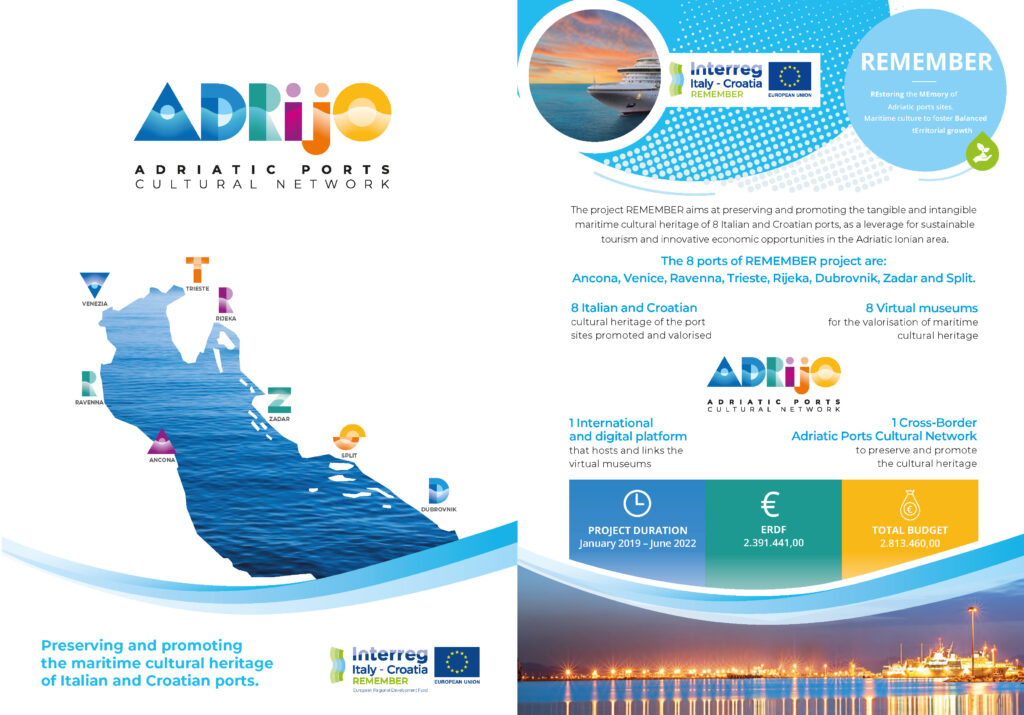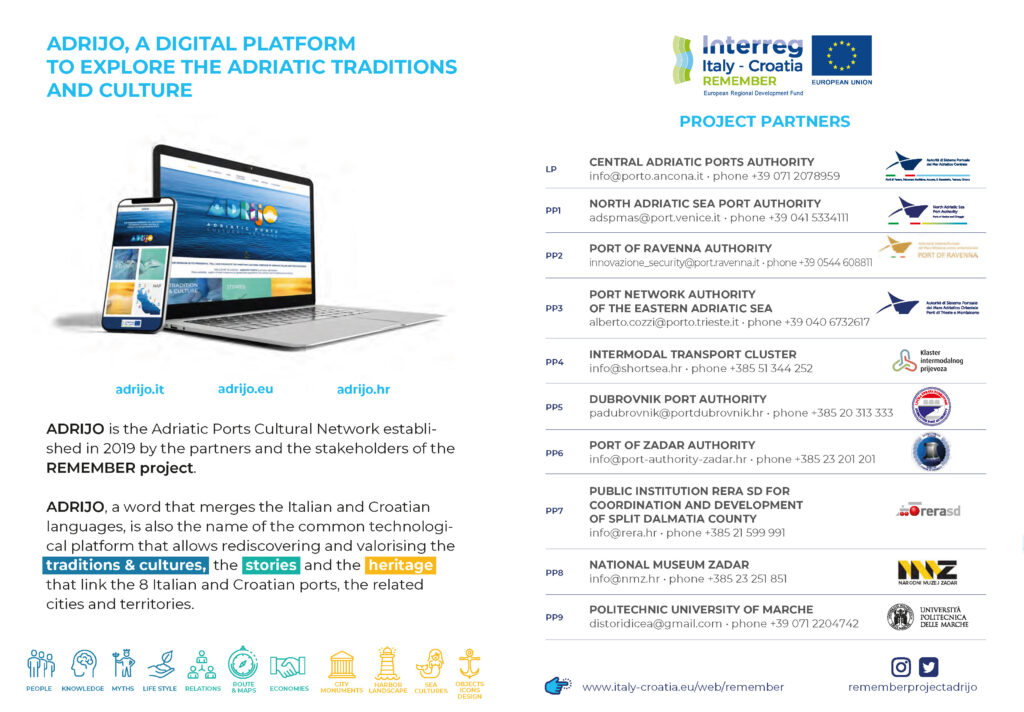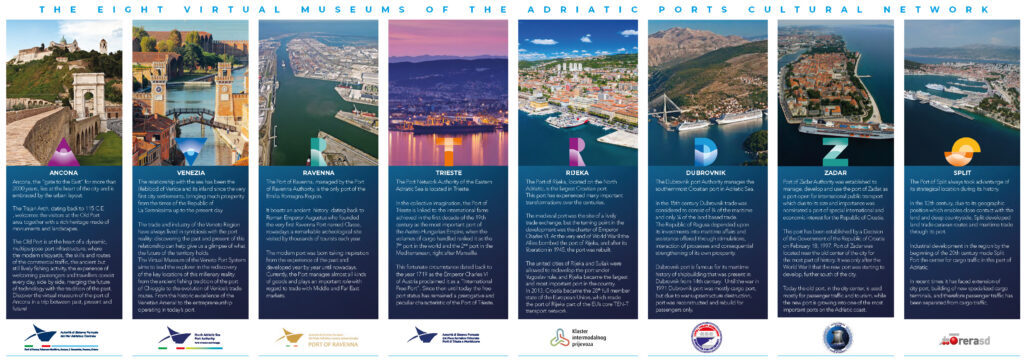╔
ADRIJO is a neologism resulting from the combination of two different words defining the sea that divides the Italian coast from the Croatian one: the Italian “Adriatico” and the Croatian “Jadransko”.
ADRIJO is the name chosen to identify the initiatives set up in 2018 by the main eight passenger ports in the Adriatic Sea with a twofold approach: giving evidence of the role of ports in the identity, know-how and traditions of local communities in port cities and setting up a joint tool to promote the tangible and intangible cultural heritage of ports, as an additional instrument to welcome port passengers and users to local tourisms boards.


Brochure presenting the ADRIJO Platform. (Source: ADRIJO network).
ADRIJO is a network of the “virtual museums” of the ports of Ancona, Dubrovnik, Ravenna, Rijeka, Split, Trieste, Venice and Zadar, aimed to present port heritage in its multiple dimensions: from traditions and monuments to professional skills and contemporary daily work. The Italian ports involved in the network are mainly focused on international ferry and cruise passengers, while the Croatian ports have also significant numbers of local users as they link the island with the mainland.

The ports involved on the project and presented in the ADRIJO virtual platform. (Source: ADRIJO network).
It was set up in the framework of the REMEMBER project (January 2019 – June 2022) with the aim of restoring the link between ports and local communities, rediscovering and valorising common cultural, social and economic roots and enhancing the connectivity between ports and cities linked by the same sea and the same values. The project was led by the Central Adriatic Ports Authority (Ancona).
ADRIJO is a virtual platform, resulting from a cross border cooperation initiative, in which the representatives of the eight ports and local communities decided to present the uniqueness of the Adriatic dimension as a single geographical ecosystem, sharing history, stories, expressions and experiences.
Each port of the network populated the platform with videos, audio clips, 3D models, drone panoramas, photos, texts, to tell the maritime and local culture. The structure of the web-portal allows the visitor to explore each virtual museums through a digital and technological immersion between the different contents chosen and created to best describe their cultural identity.
Available in English, Italian and Croatian, the multimedia platform presents a common part introducing the visitor to the concept of the Adriatic as a place of historical and cultural shared roots between the ports and cities that overlook it. Different perspectives are proposed: a geographical point of view, deepening what each port uploaded, or a navigation through the three common categories: traditions and culture, stories and heritage.
The Zadar National Museum and the Marche Polytechnic University were involved as partners of the network to ensure a scientific and consistent approach to the overall project. Local cultural experts, artist, university researcher, anthropologists, local museums, IT and multimedia experts became part of the ADRIJO community to develop more than 150 original contents explored in a transversal way: port professions (fishery, cranes operators, commercial activities), shipyards, maritime tangible heritage, port operations (ferry, logistics, cruise, mooring activities).

QR Code for the three common categories developed within the “virtual museum” of the ADRIJO Platform. (Source ADRIJO network).
Thanks to ADRIJO, ports are going beyond their natural mission as maritime infrastructure and logistics hubs to become a leverage to stimulate the social, cultural, and economic development of related territories, generating new opportunities to create sustainable touristic approaches, and increasing the mutual understanding between port communities, citizens and tourists arriving in the ports.
Furthermore, the ADRIJO platform and network contribute to underline the general awareness of port cities in the Adriatic Sea as a “liquid” cross-border community, consistently with the goals of the EU Strategy on the Adriatic-lonian Macro Region.
Thanks to ADRIJO, ports are not only a gateway for passengers and freight transit, but they become cultural hubs.
HEAD IMAGE | The network of the “virtual museums”: ports of Ancona, Dubrovnik, Ravenna, Rijeka, Split, Trieste, Venice and Zadar. (Source: ADRIJO network).
╝
More Information
The website of Adriatic Ports Cultural Network:
adrijo.eu/en